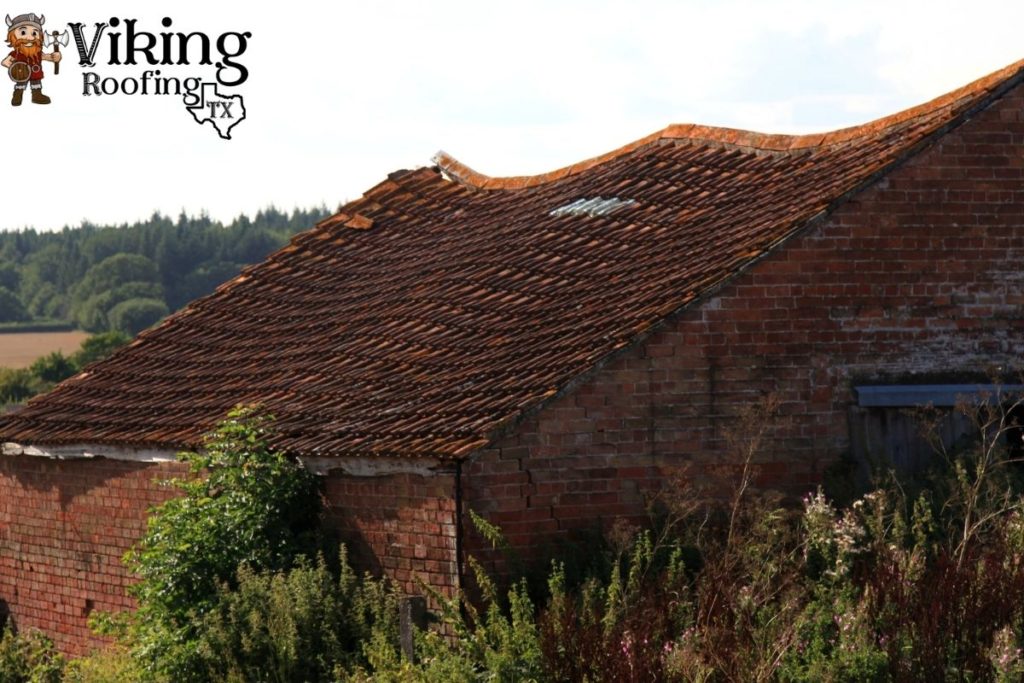
If you have to ask “how much roof sag Is acceptable”…we may have some problems. But don’t worry! It’s not (necessarily) the end of the world. Let’s take a deeper look into roof sag and what is and is not acceptable.
Hopefully, none of us will have to think about our roofs too much. The roof should simply stay put, do its function, and not cause us any stress. Roof re-roofing is a costly and time-consuming process! Continue reading if you’re concerned that your roof is sagging and needs to be repaired or replaced.
Roof sag is visible when there are any low or curved spots on the roof. Age, structural concerns with the home or roof, water damage, or too much weight on the roof are all possible causes. Any sag in the roof is unacceptable. Roof sagging signals that repairs should be completed as soon as possible to avoid further damage.
What Is Roof Sag?
Your roof should have no wavy or curving elements and should be in a straight line. Roof sag is indicated by low or wavy patches. A sagging roof can occur for a variety of causes. A drooping roof should not be walked on! It could collapse, causing significant harm.
What is the Maximum Allowable Roof Sag?
What is the solution? Not a lot! Any sagging should be taken seriously and treated. Roof sagging is frequently a sign of a more serious issue. As a result, the sinking roof will only lead to more problems in the future.
Unfortunately, once a roof begins to sag, the situation will only worsen. If you see any sagging on your roof, take action right once.
How Can I Tell if My Roof Is Sagging?
Sometimes, a visual inspection is all you need! Look down the roofline and make a note of any low spots. Examine the roof from every aspect.
Inspection From the Outside
Use a string to pull right across the ridgeline if you want a certain number. Measure the distance between the string and the roof’s lowest point. Make a mental note of the dimensions.
Inspection of the Inside
From your outdoor assessment, look for low locations that match. Check that all of the rafter ties are secure and in good working order. Examine the roof’s underside where you noticed sagging on the outside. Examine the rafters for any signs of bowing. Any water stains, damp spots, or leaks should also be noted.
Roof Sagging: What Causes It?
A roof can sag for a variety of reasons. If your roof is sagging, hire a professional roofer to assess and repair the problem.
Water Injuries
Water can seep into the roof and cause damage to the structure. If you notice moss or mold on your roof, it’s a sign that there’s been water damage.
Design Flaws
Unfortunately, some houses are poorly constructed. Within a home, there should be enough trusses, rafters, and supports to adequately support the roof. A drooping roof might occur if a builder is inexperienced or simply cuts corners.
Internal Bracing is Insufficient
Underneath the roof, the trusses and supports are crucial! The roof will sag if the braces aren’t strong enough. A variety of factors can contribute to insufficient bracing:
- The builder employed the incorrect size trusses or rafters.
- The current supports aren’t strong enough to hold the roof’s weight.
- Supports were removed by a contractor or a homeowner.
- At least one support is fractured or broken.
Excessive Weight
When a roof is changed, the old roof is frequently left in place and the new roof is installed on top. Roof coatings are cumbersome! Sagging could occur if your roof has two or three layers of roof coatings.
Certain roof coverings might also add to the weight. Concrete roof tiles are a substantial roofing material. A professional should install a tile roof in place of regular shingles, and the roof should be monitored subsequently. Additional assistance may be required.
The accumulation of snow and ice can be rather substantial! Clear any snow or ice from your roof if you see it sagging in the winter.
Age
Over time, homes and roofs will deteriorate. Maintain and reinforce the roofs of older homes to prevent them from sagging.
Household Structure Issues
Over time, a house settles. However, if the base settles dramatically, the roof may be jeopardized as well.
